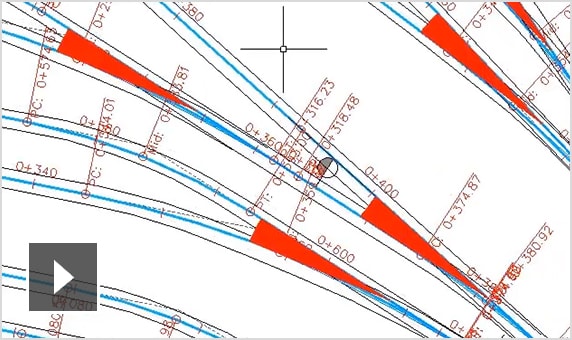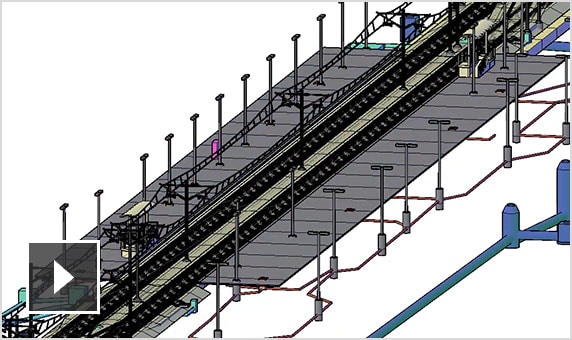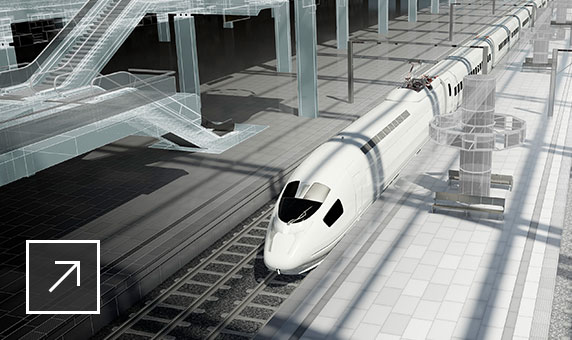Use rail alignments to create rail lines with common stationing based on specified tolerances that adjust with changes to parent rail alignment geometry, profile, and cant. (video: 1:46 min.)
CIVIL 3D FOR RAIL DESIGN
Model and analyze rail projects efficiently
Speed the planning, design, and delivery of transit stations and rail networks.
Rail design
What you can do with Civil 3D
-
-
![Drawing of rail station with draw turnout tool palette open]()
Special trackwork design
Design turnouts for branching alignments and crossover switches connecting parallel alignments based on a library of turnout and crossover types that you can edit, delete, or supplement.
-
![Video: Silent screencast that shows the tools for building a track corridor in the Civil 3D user interface]()
Corridor modeling
Build 3D track corridor models including alignments, profiles, and assemblies. Incorporate designs for switches, turnouts, platforms, and calculations for cant. (video: 54 sec.)
-
![Video: Silent screencast that shows the tools for designing platform edges in the Civil 3D user interface]()
Platform edge design
Design platform edges for light or heavy rail using single or dual platform subassemblies with a dynamically updating platform edge running along a track. (video: 1:01 min.)
-
![Video: Silent screencast that shows the design automation tools available in the Civil 3D user interface]()
Design Automation
Use visual programming to generate scripts that automate repetitive and complex tasks including electrification, signaling, and other system elements. (video: 2:42 min.)
Workflows and use cases
-
![Video: Optimize and enhance the rail design process using the tools in the AEC Collection]()
Civil 3D + ReCap Pro + InfraWorks + Revit
Establish context and perform conceptual and detailed designs of horizontal and vertical structures. (video: 2:18 min.)
-
![Partially rendered model of aerodynamically shaped high-speed train on ground floor of large terminal building]()
Trends in the future of rail
High-speed rail, VR, mobility simulation, and other trends are affecting the future of rail design.







